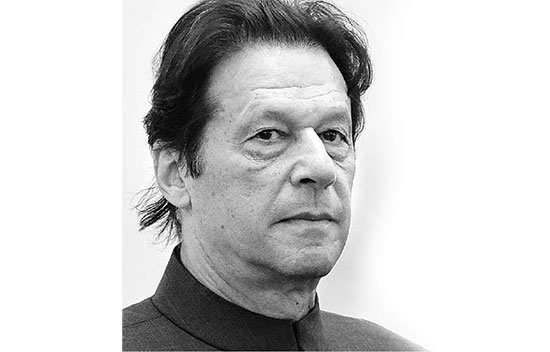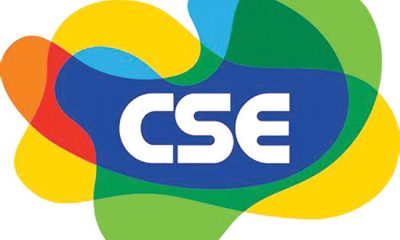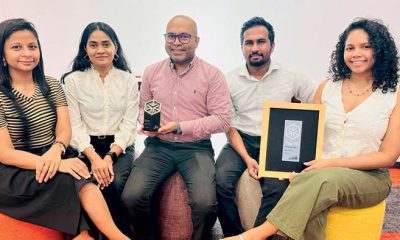Features
Stepped-up dialogue between India and Pakistan could help resolve Kashmir dispute

Pakistan Prime Minister Imran Khan has made a thought-provoking pronouncement with regard to the long-simmering Kashmir dispute which could be considered as outlining new parameters for ending the decades-long crisis in India-Pakistan relations. ‘The US has a big responsibility as the most powerful nation in the world. Almost 1.4 billion people live in the subcontinent. We are held hostage by one dispute in Kashmir, the Pakistani Prime Minister was reported as saying. He was referring to the US as a possible mediator in resolving the Kashmir dispute.
The reference to the subcontinent’s 1.4 billion people marks a refreshing change to the usual perceptions a political leader of Pakistan could have on the Kashmir question. If the Kashmir tangle is managed effectively between India and Pakistan the people of the region, which is one of the most highly populated regions of the world, could benefit. The focus on the material relief that could be obtained by the people through a meeting of minds between India and Pakistan is tantamount to bringing to the negotiating table a veritably forgotten dimension to the Kashmir dispute, which should remain a core concern for the countries concerned. The countries are truly “held hostage by one dispute in Kashmir.”
The Pakistan Prime Minister took stock of global political realities when he called on the US to help negotiate an end to the Kashmir dispute but, though a US ally, it is open to question whether India would favour such a move without reservations. India is on record as stating that the Kashmir region is part of India and it is this policy position, among other factors, that has prevented a swift resolution of the Kashmir question.
As is known, identity politics led to the break-up of the Indian sub-continent in 1947-’48 with India and Pakistan having disparate and seemingly irreconcilable conceptions of their national identities. Basically, bridging this gap between the different self-perceptions of India and Pakistan is central to the task of managing the Kashmir dispute. India sees itself as a secular democracy and for India it is unthinkable to have within its fold a region that considers itself as enjoying a disparate identity based on religion, in this case Islam. The latter political project was seen by India as undermining its foundational principles. Hence, the long-running dispute between India and Pakistan. But time is of the essence and as pointed out by Prime Minister Imran Khan the future of more than one billion people is being steadily blighted.
The US could certainly try out its skills as peace-maker in this situation of veritable gridlock between two South Asian countries who see themselves as wedded to disparate national identities, but how effective would a US negotiatory role be? A Joe Biden administration could be expected to deal empathetically with a situation of this kind but it has its own political interests to protect in the region, such as, neutralizing the military threat from the Taliban and keeping Afghanistan as democratically-oriented as possible and the observer is left to wonder whether the US would be seen by the parties to the Kashmiri dispute as sufficiently impartial. Moreover, the mindsets of the main parties to the dispute and their conflicting concerns are likely to elude many a Western mediator.
However, by bringing the hapless situation of the over one billion ordinary people of the South Asian region into focus Prime Minister Khan has put the onus on the political leaders of India and Pakistan to lose no more time in working out a mutually-acceptable solution to the Kashmir conflict.
 The road to a solution on these lines is bound to be long and arduous but it is only India and Pakistan that could make a real difference in the Kashmir gridlock. Hopefully, the leaders concerned would measure up to the challenge.
The road to a solution on these lines is bound to be long and arduous but it is only India and Pakistan that could make a real difference in the Kashmir gridlock. Hopefully, the leaders concerned would measure up to the challenge.
As this being written the UNHCR sounds a warning. ‘The number of people who have been forced to flee their homes around the world has risen to a record 82 million despite the impact of the pandemic, it said in a recent statement. The UN High Commissioner for Refugees Filippo Grande was even more specific: “We need much greater political will to address conflicts and persecution that force people to flee in the first place.”
“Many people were forced to flee because of persecution, conflict, violence and human rights violations”, the UNHCR adds. These facts ought to add substance to Prime Minister Khan’s concern over the powerless of particularly the South. If the best interests of the people are to be served political leaders need the hard resolve to shelve ideological blinkers and work as one to meet the needs of powerless people everywhere. And as the UNHCR data reveal the lot of ordinary people is aggravating. Clearly, for them violence is a fact of life.
Containing Jihadist wars in the South Asian region would be pivotal in getting India and Pakistan to work with a degree of unity towards ending the Kashmir tangle. From this viewpoint India has acted pragmatically by making contact with the Afghan Taliban in Doha. It is a recognition that Jihadist militancy is a fact of life in the South Asian theatre.
Thus far, the perception that Jihadist militants are engaged in proxy wars in South Asia have got in the way of India and Pakistan working towards their common end of advancing democratic development. The realities on the ground are highly complex and the best of minds in India and Pakistan need to take the lead in putting the relations between the states on a less confrontational footing. Very rightly, the fortunes SAARC are seen to rest on India and Pakistan relating to each other more constructively and amicably. If the latter aim is achieved the fortunes of SAARC could be turned around bringing material relief to the region’s over one billion population. Now that the ordinary citizenry of South Asia has been brought into the picture as never before states need to stand up and be counted as the primary line of defense of the masses.
Features
Proxy wars make unsettling comeback

 It’s the day of the North-East proxy war all over again. Concrete proof that this is so comes in the form of the latest military aid package approved for Ukraine by the Biden administration running into $60 billion. So substantial is this injection of assistance that it has prompted Ukrainian President Volodymyr Zelenskyy to see it as pointing to a “chance of victory”.
It’s the day of the North-East proxy war all over again. Concrete proof that this is so comes in the form of the latest military aid package approved for Ukraine by the Biden administration running into $60 billion. So substantial is this injection of assistance that it has prompted Ukrainian President Volodymyr Zelenskyy to see it as pointing to a “chance of victory”.
To the extent to which the West sees some of its best interests, such as the right to self- determination, being eroded in the Ukraine, to the same degree could the latter’s efforts to protect its independence against the Russian invasion be seen as a proxy war where the West pits itself indirectly against the East, in the form of Russia.
Only time will tell whether Zelenskyy is right in seeing the emergence of a “chance of Victory”, now that the much hoped for aid has arrived from the West, but increasingly sizeable and sophisticated arms for Ukraine foreshadow a further prolongation of the wasting war in the Ukraine. While the Russian armed forces would need to brace for an escalating and more destructive confrontation in the Ukraine, the civilians on both sides of the divide should see themselves as being placed ‘on the firing line’ as never before. Overall, the human costs of war would prove staggering.
To make matters far worse for the Russian side, the UK government too has weighed in with an aid package for Ukraine to the tune of Sterling Pounds 500 million, making the prospect of bringing early relief to the relevant suffering publics by the international community a very distant one, since the war in the Ukraine would be stepped-up several fold as a result of the influx of more arms.
It would not be irrelevant, at this juncture, to take the minds of Russia’s rulers to their Cold War failure in Afghanistan. There was nothing to gain from the long-running Afghan quagmire for both sides to the conflict. The USSR’s failed military intervention left behind an Afghanistan which has wilted in the grip of big power rivalries over the decades.
However, Afghanistan was the last of a number of Cold War era proxy wars which rendered the world an increasingly dangerous place for the majority of its peoples. We are not seeing a Cold War type ideological confrontation in the Ukraine, but it is an open question whether the Russian people, for instance, are gaining anything substantial from the war right now.
The Ukraine situation, though, points to the primacy of sovereignty and issues flowing from it in these post-Cold War times. What Ukraine impresses on ambitious global powers is the impossibility of waging colonial era type military interventions in particularly the global South at present. Ukraine, under President Zalenskyy, has decided to fight back the Russian invasion tooth-and-nail and the likelihood is that there would be no clear winners from this war of attrition.
An independent country which is committed to protecting its sovereign rights has no choice but to fight back forces that are intent on destroying it and this is the task that Ukraine has set for itself right now.
On the other hand, the Russian political and military establishments are in an effort to revive the colonial project in Ukraine, which is a preposterous proposition in the present global political order which is gravitating towards political and economic liberalization. Given this backdrop it is small wonder that the West and its military arm, NATO, are firmly behind Ukraine.
Not surprisingly, the West is seeing in the Russian invasion of Ukraine a flagrant violation of all the political values that it claims to uphold and protect. There is no turning back on the moves towards political and economic liberalization that characterize the current neo-liberal age.
Moreover, by invading Ukraine it could be said that Russia is in an attempt to take the world back to some of the earliest stages in the development of modern day capitalism. Besides, if Russia’s reasons for invading Ukraine are to be accepted, any bullying big power could consider itself justified in invading its smaller neighbours, which it sees as coming under its suzerainty.
Accordingly, the world is in for a long-running East-West proxy war in the Ukraine. However, the world’s security worries would in no way end with the Ukraine because it also has other major concerns in the form of the Middle East blood-letting and the Taiwan Straits, in addition to those parts of Africa that are continuing to be weighed down by inter and intra-state turmoil.
In the Middle Eastern theatre and in the Taiwan Straits, intervention by the West is bound to continue and intensify because the latter sees some its crucial interests as being threatened in the relevant regions. Despite its keenness to extend humanitarian assistance to the war-affected populations in the Gaza, the US remains committed to protecting Israel’s best interests.
Such concern has heightened in the wake of the current hostilities between Iran and Israel. It would be in the US’ interests to keep Iran in check because the latter is a threat to Israel as well as to the West’s oil and energy supplies. Accordingly, the US would be going the extra mile to ensure Israel’s security while preventing Iran from being too great a military and political power in the Middle East.
The US could work towards the latter aims by constantly arming Israel and ensuring that the military balance in the region is constantly in favour of Israel rather than its foes’. Here too, then, is an ongoing proxy war between the West and the East; the latter taking the form of Iran which is backed by China and Russia.
Another potentially destructive proxy war between West and East is, meanwhile, working itself out in the Taiwan Straits. The US has over the years been seeing itself as a natural ally of Taiwan because the latter is a capitalist outpost in South East Asia as well as being viewed as an adversarial, break-way state by China. In its efforts to contain the power of China in Asia, the US has been seeing it to be in its interests to ensure the security of Taiwan as against China’s growing regional predominance. All this works out to more Western military aid to Taiwan, going forward.
Accordingly, proxy wars between West and East are once again surfacing unsettlingly in international politics. Military budgets of Western powers are set to grow at the expense of welfare budgets. Needless to say, the latter trend will eventually result in growing public unrest and anger towards governments.
Features
Artificial Intelligence: Are we getting into it with our eyes open? – Part II

by Prof. Janendra De Costa
Senior Professor and Chair of Crop Science, Faculty of Agriculture, University of Peradeniya
How prepared is Sri Lanka for AI?
With the initiative coming from the very top, it is likely that AI will come to the fore at least in the official documents on development strategy and policy in the near future. As promised by the Minister of Education, AI is likely to make its way in to school curricula as well. Being an election year, there is a good possibility that the manifestos of all mainstream political parties in Sri Lanka will carry statements about promoting AI. Therefore, it is pertinent to ask whether Sri Lanka has the pre-requisites for successful adoption of AI in its key sectors and whether AI can be included in the school curricula from next year onwards. While confessing to be a non-expert in AI, my view, as an educator, researcher and a practitioner of Science is that Sri Lanka needs a substantial effort to first build a foundation for successful adoption of AI.
First and foremost, Sri Lanka lacks the human capital, an adequate number of trained personnel and practitioners in AI. The considerable exodus of experts in computer science and related technologies since the 2022 economic collapse and its repercussions in the aftermath have left the country significantly impoverished in terms of expertise in almost all established disciplines. The scarcity of experts would be even more acute in new, emerging disciplines such as AI. When the President and the Minister of Education talks about including AI in the school curricula, it is doubtful whether they have considered the availability adequately trained teachers to teach AI in schools or whether there has been adequate preparation in terms of computer facilities, textbooks (printed or electronic) and other learning resources.
Secondly, the past record of adopting new, emerging technologies in Sri Lanka tells us that the tendency will, most probably, be to adopt AI tools developed elsewhere with algorithms trained on data collected elsewhere. Only a small minority of the Sri Lankan experts is likely to take the considerably more difficult pathway of developing our own AI tools and training them on data collected specifically in a Sri Lankan context. As mentioned earlier in this article, the big, comprehensive data sets on which to train AI algorithms do not exist at present in most of the key areas where AI could make a significant positive contribution to national development of Sri Lanka. With the present and past levels of government investment on R & D in S & T (Sri Lanka with only 0.1% of its GDP invested in Science and Technology ranks among the lowest in the world in this index), there is little hope that there will be adequate and sustained support to develop our own AI tools to tackle the specific development needs of higher priority to Sri Lanka. The argument that why spend so much to develop our own AI tools when those already developed elsewhere are available will readily come from the government officials, especially those in the treasury, who have little understanding of how advancements in S & T take place via R & D.
Sri Lanka’s previous experiences in adopting new, emerging technologies
While we are about to embark on a journey to integrate AI into our national agenda, it is worth noting how similar initiatives in the past to integrate new, emerging technologies have fared. In this regard, the story of nanotechnology is especially relevant and offers valuable lessons. Nanotechnology in Sri Lanka was first promoted around 2005 as a technology that carried enormous promise for Sri Lanka to propel itself to the next level economic development via production of globally competitive nanoproducts. The initiative was spearheaded by the newly appointed Minister of Science and Technology, who was himself a former scientist and a former director of a state-sector research institute. The argument at the time was that Sri Lanka should invest its limited financial, infrastructural and humany resources on R & D in a few high potential areas rather than spreading it across all disciplines. Nanotechnology and biotechnology were the high-potential areas that were identified. The Sri Lanka Institute of Nanotechnology (SLINTEC) was established with state-of-the-art facilities on par with those available in developed countries and a select group of scientists from Sri Lanka and a few expatriate Sri Lankan scientists were employed on remuneration packages which were far superior to that enjoyed by the scientists in state sector R & D institutions. The initial funding came from a public-private partnership between the government and a few private sector organizations. It is worth noting that to provide its share of the venture, the National Science Foundation, the premier government organization that was funding S & T research in Sri Lanka diverted all its allocation for research from the treasury to the SLINTEC, thereby depriving research funding to all other areas of Science and Technology for a few years. To cut a long story short, today, after nearly 20 years, the expected nanotechnology boom along with the globally-competitive nanoproducts and the projected increase in the national GDP have not materialized while the SLINTEC, with all its state-of-the-art facilities barely survives, struggling to sustain itself financially, with all its expatriate Sri Lankan scientists gone back to their adopted countries and almost all Sri Lankan scientists who were employed initially having left for universities, in Sri Lanka and abroad. The most notable achievement of SLINTEC during this period was the development of a urea-based nanofertiliser, which when applied to the soil had the capability to release nitrogen slowly, thus facilitating its uptake by plant roots with minimum losses due to leaching. However, the US patent of this product, which was developed with a significant contribution of public funds of the Sri Lankan government was sold to a foreign company in a transaction, the details, and conditions of which are still not transparent to the general public. Ironically, after having spent so much on developing a nanofertiliser of its own, Sri Lanka had to spend another huge sum of public money to purchase a liquid nanofertiliser during the ill-fated 100% organic agriculture drive. Like the 100% organic agriculture project, the imported liquid nanofertilizer turned out to be largely ineffective.
The lesson that can be learnt (for those who are willing to learn) from Sri Lanka’s experience to adopt and promote nanotechnology is that successful and widespread adoption of a new technology is not possible without first establishing a broad base of R & D expertise and infrastructure in an adequately wide range of disciplines and applications. Establishing a centralised institute, however well-equipped, will not be sustainable in the long run and will not make a significant impact on national development. The adoption of biotechnology in Sri Lanka, which emerged as a discipline of high promise to Sri Lanka in the 1990s, is marginally better though nowhere near the level required to boost the national economy. When the present Minister of Education was holding the portfolio for Technology and Research under a previous administration, there was a proposal by a few academics close to him to establish a well-equipped Centre for biotechnology along the same lines as SLINTEC. The present author, as a member of the National Science and Technology Commission (NASTEC) at the time, advocated establishment of several biotechnology research groups in key areas of its applications and supporting them through equipment and other resources rather than spending on establishing one big Centre. This advice fell on deaf ears and the proposal went ahead but stalled when the Minister left his portfolio. This is illustrative of many initiatives in Sri Lanka, especially related to Science and Technology, which come from the top (i.e. the politicians). These proposals often come with a ‘sell-by-date’, which is either the next election or the period of the politician in charge of the specific Ministry. It is important to take into account all these historical facts and learn lessons from them when embarking on this new initiative to promote, develop and adopt AI.
Concluding remarks
There is no doubt that AI has the potential to bring about significant positive impacts in several key sectors of the Sri Lankan economy and many facets of the day-to-day life of the Sri Lankans. However, it is important to understand that realization of that enormous potential of AI, which is already happening in the developed world4,7, requires a substantial investment from within Sri Lanka to educate itself on the strengths and limitations of AI and develop, as much as possible, AI tools of its own or adopt those developed elsewhere only after rigorous validation within the Sri Lankan context. Adequate precautions are required to address the inherent limitations of AI, formulate and implement safeguards against the risks and illusions posed by AI and to guard against total reliance on AI once it gains the trust of its users1,5. In particular, measures are needed to prevent the loss of creativity in future generations of Sri Lankans, especially the students and other learner groups, who are highly likely to be hooked on AI tools in their learning process.
Additional Reading
1. Why scientists trust AI too much – and what to do about it. (Editorial). Nature, 627: 243. 14 March 2024. https://doi.org/10.1038/s41586-023-06221-2.
2. Alvarado, R. (2023). What kind of trust does AI deserve, if any?. AI and Ethics, 3(4): 1169-1183. https://doi.org/10.1007/s43681-022-00224-x.
3. Carroll, J. M. (2022). Why should humans trust AI?. Interactions, 29(4), 73-77. https://doi.org/10.1145/3538392.
4. Krenn, M. et al. (2022). On scientific understanding with artificial intelligence. Nature Reviews Physics, 4(12): 761-769. https://doi.org/10.1038/s42254-022-00518-3.
5. Messeri, L. & Crockett, M.J. (2024). Artificial intelligence and illusions of understanding in scientific research. Nature, 627: 49-58. https://doi.org/10.1038/s41586-024-07146-0.
6. von Eschenbach, W.J. (2021). Transparency and the Black Box problem: Why we do not trust AI. Philosophy & Technology, 34: 1607–1622. https://doi.org/10.1007/s13347-021-00477-0.
7. Wang, H. et al. (2023). Scientific discovery in the age of artificial intelligence. Nature, 620: 47-60. https://doi.org/10.1038/s41586-023-06221-2.
The writer is a Fellow of the National Academy of Sciences of Sri Lanka and has been an academic and a research scientist in Agriculture and Natural Sciences for over three decades while being based in Sri Lanka.
Features
Promote purple sweet potato

By Prof. Kirthi Tennakone
The sweet potato is probably the oldest cultivated crop. Native to tropical America, Peruvians grew it 8,000 years ago. Colombus introduced sweet potatoes to Europe; later the Spanish and Portuguese dispersed the species in Asia and Africa. Today, sweet potato is one of the staple foods that alleviate starvation and malnutrition in many parts of the globe.
In the tropics, sweet potatoes produce more food per hectare than any other cultivation. Being drought – resistant and requiring minimal irrigation, fertilizer and pesticide inputs, the crop would be a promise for the world confronted by climate change.
There are highly nutritious varieties of sweet potatoes, of which sweet potato with bright purple flesh; rich in disease-fighting agents, vitamins, minerals and fiber is emerging as a superfood – chosen as the vegetable of the year 2024 by Veganuary (the organization that promotes vegetarianism by abstaining from eating animal-based food in the month of January, every year)
The sweet potato stands out as the first genetically modified vegetable people have unknowingly consumed for millennia. The modification was done not by humans, but by a bacterium found in soil. The ancestor of sweet potatoes was a creeper belonging to the Morning Glory family (Convalesce). Thousands of years ago microbe named Agrobacterium transferred a portion of its DNA (a gene) into the genome of a plant of the original kind in Ecuador, favourably altering its characteristics. In the modified plant, roots were enlarged to yield giant tubers, storing starch, proteins, minerals, water and a host of other beneficial substances. Naturally, the genetically engineered variety withstood harsh conditions and survived better. Noting the exceptional food value, South American farmers domesticated the transgenic species. The rise of Mayan and Aztec civilizations owes much to the sweet potato. Transgenic crops can do wonders!
Today, thousands of cultivars of sweet potato exist, generally described by the colour of the skin and flesh of the yam. The skin colours of white, brown, pink, yellow and purple are common, and the flesh colours vary from white, yellow and orange to purple. These colours originate from two types of pigments known as carotenes and anthocyanins.
Apart from chlorophyll, which imparts green colour to leaves, plants carry two other pigment types: carotenes yellowish orange in colour and anthocyanins displaying hues ranging from red to blue. As we all know, in leaves chlorophyll harvests sunlight and utilizes trapped energy to fix carbon dioxide synthesizing carbohydrates. Carotene and anthocyanins, present in leaves and other plant tissue play an important role in photosynthesis and other plant biochemical processes and give conspicuous colours to flowers, fruits and yams.
Nowadays, people are told to eat coloured vegetables and fruits, because carotenes and anthocyanins have numerous health benefits, including the prevention of cancer, heart disease, diabetes and dementia. What is the secret of coloured produce? A condition that greatly contributes to the above complications is oxidative stress, a side effect of the indispensable oxygen we continuously breathe. Oxygen burns carbohydrates and fat in our bodies, liberating energy and releasing water and carbon dioxide. However, this chemical reaction creates highly reactive molecular species, known as free radicals. Free radicals damage DNA and attack cellular tissue, causing disease and aging. Fortunately, there are agents called antioxidants that scavenge free radicals before they do any harm. Carotenes and anthocyanins act as superb antioxidants.
Current research reveals anthocyanins, the red and blue pigments in vegetables and fruits have a myriad of health benefits because they are water soluble and transmissible throughout the body after absorption from the gut. They effectively quench free radicals, reducing DNA and cellular damage – a primary cause of cancer and inflammatory diseases. Anthocyanins cross the blood-brain barrier and possess a protective action against neurodegenerative cognitive impairments such as Parkinsonism and Alzheimer’s disease. With the increase in human longevity, these illnesses pose a major health issue for which no curative treatments are available. Recent investigations provide evidence for the beneficial effect of consuming anthocyanins rich vegetables in reducing the risk of developing these debilitating conditions.
The brilliantly coloured purple sweet potatoes are gaining recognition as a superfood because of the exceptionally high anthocyanin content, and the remarkable stability of the pigment and its resistance to cooking. The Spanish seemed to have collected this special variety of sweet potatoes from the Aztecs in Peru and planted it in the Philippines around the 1400s and from there, it spread to China and Japan. The climate on the island of Okinawa was ideal for sweet potatoes, a staple food for the islanders, who preferred the purple variety. Okinawans obtain more than 50% of their calorie requirements from sweet potatoes. The incidence of cancer, heart disease and dementia stand remarkably low in this land and people live relatively long compared to other regions of the world. Are purple sweet potatoes the secret of Okinawan longevity and healthiness?
Of course, other factors such as lifestyle and assortments in the diet would contribute to the good health and longevity of the people of Okinawa. As more and more studies confirm the consumption of purple sweet potatoes is indeed an important cause, the world is rushing to cultivate this crop and promote its consumption.
Purple-fleshed sweet potatoes are rare in Sri Lanka. The farmers and consumers are largely unaware of its value.
The author was fascinatingly attracted to purple sweet potato, because of his interest in anthocyanin pigments, which he used to demonstrate a novel solar cell concept for the first time now pursued worldwide. He successfully grew this plant in his home garden, Hantana, Kandy, and obtained a good yield; some tubers weighed more than a kilo. Purple sweet prefers colder night temperatures. Our Central Highlands are probably best suited to cultivating this crop. He wishes Sri Lankans will cultivate this crop and promote its consumption.
(The author is a theoretical physicist, formerly working at the Institute of Fundamental Studies, Sri Lanka. He can be reached via email: ktenna@yahoo.co.uk)
-

 Business4 days ago
Business4 days agoCEAT Kelani launches three new radial tyre variants in ‘Orion Brawo’ range
-

 Business6 days ago
Business6 days agoDialog-Airtel Lanka merger comes centre stage
-

 Business3 days ago
Business3 days agoCeyline Travels and MBA Alumni Association of University of Colombo sign MOU
-

 Business6 days ago
Business6 days agoSLFEA appoints JAT as a Facilitation Partner for training painters to provide overseas employment opportunities
-

 Business4 days ago
Business4 days agoHayleys Fabric celebrates triple triumph at ISPO Textrends Spring/Summer 2026
-

 Business5 days ago
Business5 days agoUrgent appeal from Sri Lankan exporters on rupee appreciation
-

 Business3 days ago
Business3 days agoMaldivian to launch direct flights to Colombo
-

 Sports4 days ago
Sports4 days agoHello Madras, ‘ai api kaluda?’



























